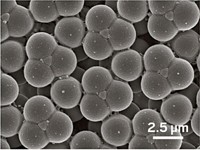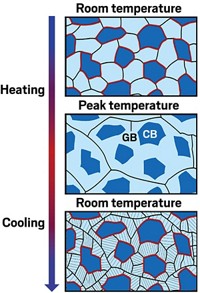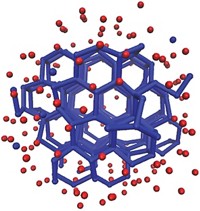Advertisement
Grab your lab coat. Let's get started
Welcome!
Welcome!
Create an account below to get 6 C&EN articles per month, receive newsletters and more - all free.
It seems this is your first time logging in online. Please enter the following information to continue.
As an ACS member you automatically get access to this site. All we need is few more details to create your reading experience.
Not you? Sign in with a different account.
Not you? Sign in with a different account.
ERROR 1
ERROR 1
ERROR 2
ERROR 2
ERROR 2
ERROR 2
ERROR 2
Password and Confirm password must match.
If you have an ACS member number, please enter it here so we can link this account to your membership. (optional)
ERROR 2
ACS values your privacy. By submitting your information, you are gaining access to C&EN and subscribing to our weekly newsletter. We use the information you provide to make your reading experience better, and we will never sell your data to third party members.
Materials
Atomic force microscopy and infrared spectroscopy combine to give close-up look at organic matter in shale
Grains separated by mere micrometers can differ substantially in chemical composition
by Celia Henry Arnaud
January 1, 2018
| A version of this story appeared in
Volume 96, Issue 1
Shale, a sedimentary rock that is a rich source of petroleum, consists of solid organic matter scattered in a mineral framework. Scanning electron microscopy reveals that neighboring organic matter particles often differ greatly in porosity, but such measurements reveal little about their underlying chemical compositions. Andrew E. Pomerantz of Schlumberger-Doll Research Center and coworkers have now used atomic-force-microscopy-based infrared spectroscopy for nanoscale chemical and mechanical characterization of organic matter from the New Albany Shale geological formation (Nat. Commun. 2017, DOI: 10.1038/s41467-017-02254-0). “This approach gives a glimpse into the composition of discrete particles of organic matter that are too small and too close together to be resolved by traditional chemical imaging tools,” Pomerantz says. Using the method, the researchers found that during artificial maturation the composition of some types of organic matter changes dramatically, whereas the composition of others changes very little. Commenting on the work, Benoit Coasne, a physicist at Grenoble Alps University, notes that although solid organic matter in shale remains poorly understood, “being able to characterize at the nanoscale its mechanical and chemical disorder in a combined way is definitely a big step in the right direction.”





Join the conversation
Contact the reporter
Submit a Letter to the Editor for publication
Engage with us on Twitter